Dogs have always held a special place in our hearts. They are our loyal companions, our protectors, and often, our heroes. Throughout history, many dogs have shown extraordinary bravery, loyalty, and intelligence, leaving an indelible mark on our lives and cultures. These remarkable canines have performed acts of heroism and steadfast devotion that continue to inspire and move us.
From the snowy trails of Alaska to the war-torn landscapes of World War II, dogs have risen to the occasion in times of need, displaying courage and loyalty beyond measure. They have saved lives, provided comfort in times of despair, and even stood guard over their loved ones long after their passing.
As you read through these accounts, you’ll find that each dog, regardless of their breed or background, shares a common thread of love and loyalty that transcends time and place. Their actions remind us of the deep connections we share with our canine friends and the lengths they will go to for us.
Join us in honoring these heroic dogs and the legacy they leave behind. Their stories are not just about their deeds but also about the enduring spirit of companionship that dogs bring into our lives. Through their courage and loyalty, they teach us about the power of love and the strength of the bond between humans and their four-legged friends.
#1 Balto with Gunnar Kaasen, his musher in the 1925 Serum Run.
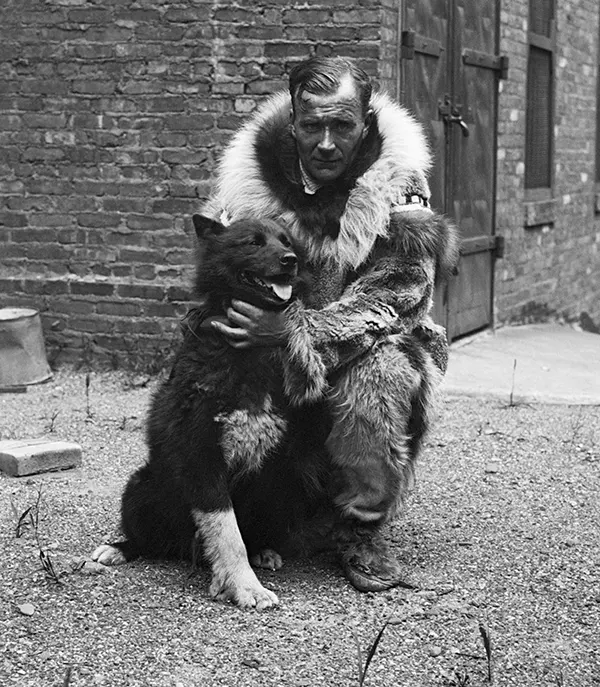
In January 1925, the small town of Nome, Alaska, faced a dire crisis. A deadly diphtheria outbreak threatened the lives of its residents, particularly its children. Isolated by the harsh Arctic winter, Nome had no way to receive the life-saving serum needed to stop the outbreak. The town's only hope lay in a relay of sled dog teams that would transport the serum across 674 miles of treacherous terrain from Fairbanks to Nome.
Among the many courageous sled dogs that participated in this perilous journey, one dog stood out: Balto. Balto was a 45-pound mix of Siberian Husky, Malamute, and possibly wolf. Despite his relatively small size, Balto possessed incredible strength and endurance. He would soon become a national hero for his role in the serum run.
The journey began in Anchorage, where the serum was transported by train to Nenana. From there, the first sled dog team set out on January 27, 1925. The teams faced brutal conditions, including temperatures as low as minus 30 degrees Fahrenheit and fierce winds. Each team covered a portion of the distance, passing the serum to the next team in a relay-like fashion. Balto was part of the team led by Norwegian musher Gunnar Kaasen. They were assigned to the final leg of the journey, a 55-mile stretch from Bluff to Nome. By the time they received the serum, both Kaasen and the dogs were already exhausted from the difficult journey. However, the worst was yet to come.
As they set out on the final leg, the weather took a turn for the worse. A blizzard with gale-force winds and whiteout conditions descended upon them. Visibility was almost zero, and the temperatures were dangerously low. Kaasen's hands and face began to freeze, and he struggled to keep his eyes open against the biting wind. At times, he could barely see the trail ahead.In these extreme conditions, Balto's instincts and determination became crucial. Despite the blinding snow and freezing temperatures, Balto pressed on, leading the team with unwavering courage. His keen sense of smell and intuition helped him stay on course even when Kaasen could not see the trail markers. Balto's leadership and stamina were instrumental in navigating the treacherous terrain and ensuring that the serum was delivered safely.
Finally, on February 2, 1925, after an arduous journey, Balto and his team arrived in Nome. They had covered the final 55 miles in just 20 hours, bringing the life-saving serum to the desperate town. Balto's incredible feat became a symbol of heroism and perseverance, and he quickly became a national hero.
Two years later, in February 1927, Balto and his team were discovered in a “dime museum” in Los Angeles by Cleveland businessman George Kimble. Outraged by the poor condition and degradation of the heroic dogs, Kimble negotiated to purchase them for $2,000. He then launched a campaign to raise the necessary funds, and the public responded enthusiastically.
On March 19, 1927, Balto and his team arrived in Cleveland, where they were greeted with a parade and a hero’s welcome. The dogs were eventually housed at the Brookside Park Zoo, where they lived out their days in comfort and safety. Balto's story remains a testament to the bravery and resilience of sled dogs and their crucial role in saving the lives of the people of Nome.
#2 Greyfriars Bobby: The Most Famous Dog in Scotland
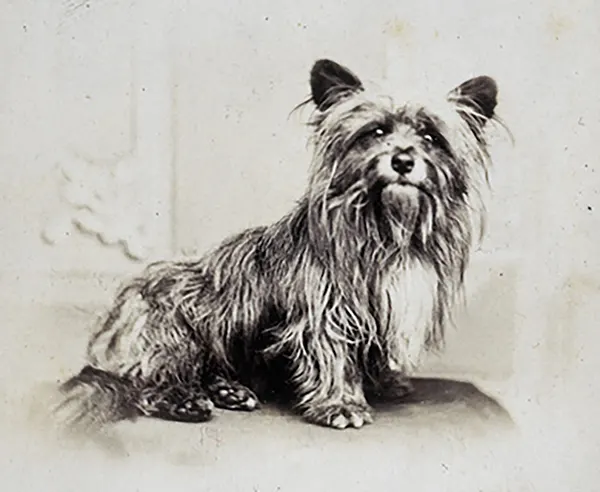
Greyfriars Bobby is one of Scotland's most beloved and famous dogs, known for his unwavering loyalty. Born around 1855, Bobby was a Skye Terrier who spent his early years under the care of John Gray, a local nightwatchman affectionately called "Auld Jock." The bond between Bobby and Gray was strong and affectionate, and they were constant companions.
In 1858, tragedy struck when John Gray succumbed to tuberculosis. His passing left Bobby without his beloved master. Following Gray's funeral, a remarkable event occurred that would etch Bobby's name into Scottish folklore. Bobby reportedly led the funeral procession to Greyfriars Cemetery, where Gray was buried. After the burial, Bobby refused to leave his master's grave, resisting all efforts to remove him.
For the next 14 years, Bobby maintained a near-constant vigil at Greyfriars Cemetery. Rain or shine, Bobby stayed by Gray's grave, a testament to his loyalty and love for his late master. His dedication was so profound that it caught the attention of the local community and beyond.
Bobby's daily routine became a familiar sight. Every day at precisely 1 p.m., Bobby would briefly leave the cemetery upon hearing the firing of the one o'clock gun from Edinburgh Castle. He would make his way to a nearby restaurant where he was fed, and then he would promptly return to his post by Gray's grave.
The story of Greyfriars Bobby spread throughout Edinburgh and soon captured the hearts of people all over Scotland. His loyalty and devotion to his master even after death resonated deeply with many. Visitors from near and far would come to see the little dog who refused to leave his master's side.
As the years went by, Greyfriars Bobby became a symbol of loyalty and devotion. His story was passed down through generations, and he became a beloved figure in Scottish culture. Bobby's presence at the cemetery also brought attention to Greyfriars Kirkyard, drawing visitors who wanted to pay their respects to both Bobby and his master.
#3 Judy: The Loyal Dog That Became Prisoner of War
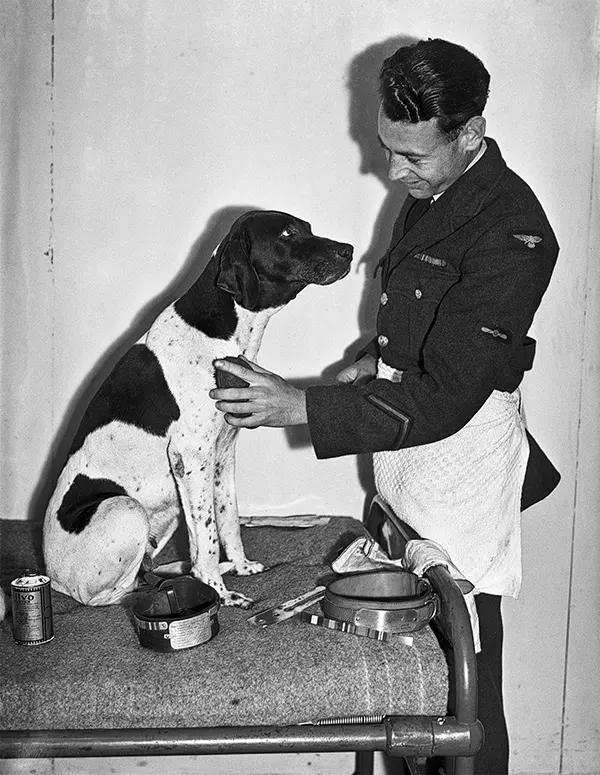
Judy, a remarkable dog who served during World War II, became an unexpected hero and the only dog to be officially registered as a prisoner of war. Her journey is a tale of bravery, loyalty, and survival against incredible odds.
Judy began her service as a ship's dog on the HMS Gnat and later the HMS Grasshopper, patrolling the Yangtze River before and during the war. She quickly became an invaluable member of the crew due to her keen senses, especially her ability to detect incoming aircraft long before they were visible to human eyes. This ability gave the crew precious extra moments to prepare for potential attacks.
During the Battle of Singapore in 1942, the HMS Grasshopper was attacked and ultimately sunk by enemy aircraft. In the chaos, Judy was nearly killed, but a returning crewman managed to rescue her. The surviving crew, including Judy, found themselves stranded on a deserted island. In a critical moment, Judy demonstrated her resourcefulness by discovering a fresh water source, which was essential for the crew's survival. Her find provided the much-needed sustenance to keep the men alive while they figured out their next steps. The crew and Judy embarked on a grueling 200-mile trek through the dense and dangerous jungle. This journey was fraught with peril, including an encounter with a crocodile, which Judy remarkably survived. Despite these challenges, the group pressed on, driven by the hope of reaching safety.
Unfortunately, their arduous journey ended in capture. They arrived too late to avoid the advancing Japanese forces and were taken as prisoners of war. Judy was smuggled into the Gloegoer POW camp in Medan, Indonesia, where she formed a deep bond with Leading Aircraftsman Frank Williams. Williams became her lifelong companion and was instrumental in ensuring Judy's continued survival in the harsh conditions of the camp.
Understanding the harsh realities of the POW camp, Williams knew that Judy’s presence could be seen as a threat. He took the bold step of convincing the camp Commandant to officially register Judy as a prisoner of war. Remarkably, the Commandant agreed, and Judy was given the POW number '81A Gloegoer Medan.' This registration made Judy the only dog to be officially recognized as a POW during the Second World War.
In the camp, Judy's presence provided a significant morale boost to the prisoners. Her loyalty and spirited nature gave the men hope and a sense of normalcy amidst the suffering. She became a symbol of resilience and courage, embodying the spirit of the prisoners.
Judy's story of survival continued through the remainder of the war. She endured the same hardships as the human prisoners, including scarce food, disease, and brutal treatment by the Japanese guards. Despite these conditions, Judy's loyalty never wavered. She remained by Williams' side, providing companionship and comfort through the darkest times.
When the war ended, Judy and Williams were liberated from the camp. Judy’s incredible story of bravery and loyalty did not go unnoticed. She was awarded the Dickin Medal, often referred to as the animal equivalent of the Victoria Cross, for her service and bravery during the war.
#4 Hachiko: The Dog Who Never Stopped Waiting For the Return of His Owner
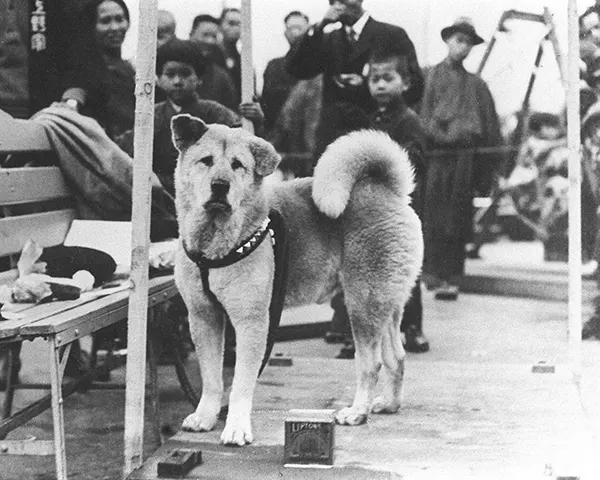
Hachikō, a Japanese Akita dog born on November 10, 1923, near Ōdate in the Akita Prefecture, is celebrated for his unwavering loyalty to his owner, Hidesaburō Ueno. This story of devotion began in 1924 when Hachikō was brought to live in Shibuya, Tokyo, by Ueno, a professor at Tokyo Imperial University. Every day, Hachikō would accompany Ueno to Shibuya Station in the morning and wait for his return in the afternoon. This routine became a comforting rhythm for both the professor and his dog. The sight of Hachikō eagerly waiting at the station became familiar to commuters and locals alike, symbolizing the special bond between a pet and its owner.
However, tragedy struck on May 21, 1925. On that day, Ueno suffered a cerebral hemorrhage while at work and passed away suddenly. He never returned to Shibuya Station to meet his loyal dog. Despite Ueno’s passing, Hachikō continued to wait at the station every day, hoping for his owner’s return. His devotion was so profound that he became a fixture at the station, seen sitting patiently in his usual spot.
For nearly ten years, Hachikō's daily vigil continued. Rain or shine, he would be there, waiting for Ueno. The commuters and station staff grew to love and care for Hachikō, often bringing him food and water. His story spread, touching the hearts of everyone who heard it. Hachikō became more than just a dog; he became a symbol of loyalty and fidelity in Japanese culture.
In 1932, a former student of Ueno's, who had become an expert on Akitas, published several articles about Hachikō and his extraordinary loyalty. These articles brought national attention to Hachikō's story, and he quickly became a beloved figure throughout Japan. His presence at Shibuya Station served as a poignant reminder of the deep bonds that can exist between humans and their pets.
On March 8, 1935, Hachikō passed away near Shibuya Station, still waiting for his owner to return. His death marked the end of an era, but his legacy lived on. The people of Japan mourned the loss of their loyal friend, and Hachikō was honored in many ways. A bronze statue was erected at Shibuya Station in 1934, with Hachikō himself present at the unveiling ceremony. This statue remains a popular meeting spot and a symbol of loyalty to this day.
#5 Sergeant Stubby: The World War I Canine Hero Who Became a Legend
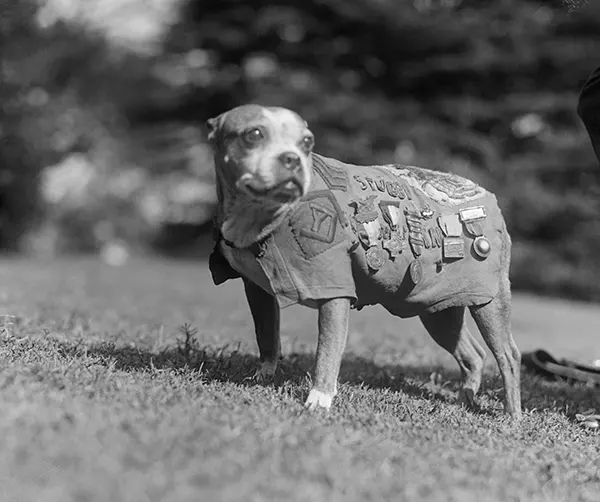
Sergeant Stubby: The World War I Canine Hero Who Became a LegendSergeant Stubby was an American Pit Bull Terrier who became the unofficial mascot of the 102nd Infantry Regiment, part of the 26th (Yankee) Division, during World War I. His journey from stray dog to war hero began when he wandered onto the grounds of Yale University in 1917, where members of the 102nd Infantry were training. Private J. Robert Conroy adopted the dog and named him Stubby for his short, stout stature. Stubby quickly became a beloved member of the regiment, boosting morale with his playful antics and loyal presence.
When the 102nd Infantry shipped out to France, Conroy smuggled Stubby aboard the SS Minnesota, hiding him in a coal bin. Despite the initial intention to leave Stubby behind, the regiment's commanding officer allowed the dog to stay after seeing his value to the troops' morale. Stubby was given a specially designed uniform complete with patches and rank insignia.
Stubby’s first experience of war came on the Western Front. During his 18 months of service, he participated in 17 battles and four major offensives. His keen senses and bravery soon proved invaluable. One night, during a surprise mustard gas attack, Stubby’s acute sense of smell detected the gas before it reached the soldiers. He ran through the trenches barking and nipping at the men, waking them up and alerting them to put on their gas masks, thus saving many lives.
Stubby’s ability to locate and comfort the wounded also became legendary. He had an uncanny knack for finding injured soldiers in no man's land, barking to alert medics and staying with the wounded until help arrived. His actions not only saved lives but also provided much-needed comfort to the injured soldiers, boosting their spirits.
One of Stubby’s most famous acts of bravery occurred when he discovered a German soldier mapping out the American trenches. Stubby, recognizing the threat, attacked the spy, biting him and holding him by the seat of his pants until American soldiers arrived to apprehend him. This act earned Stubby the rank of sergeant, the first dog to be given a rank in the U.S. Armed Forces.
#6 Terry: The Terrier Who Played Toto in The Wizard of Oz
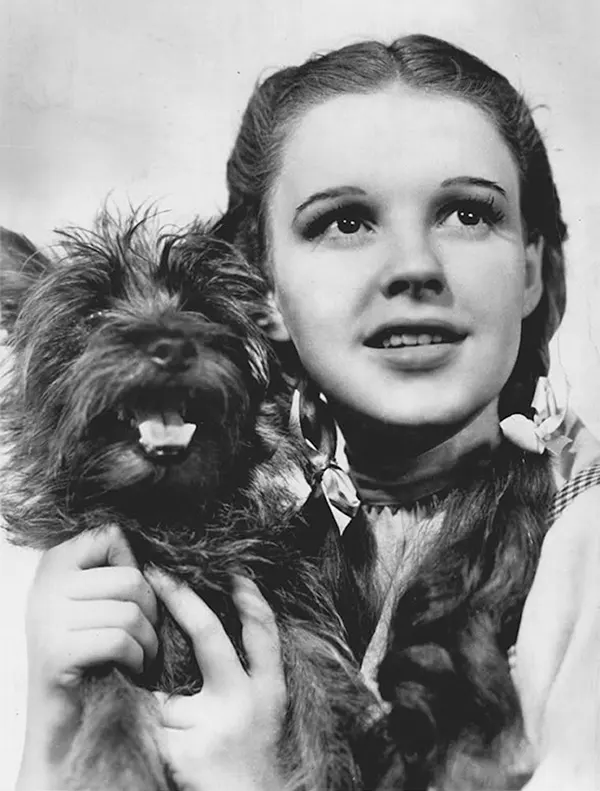
Terry, the Cairn Terrier who famously portrayed Toto in the 1939 classic film "The Wizard of Oz," has a fascinating backstory that adds depth to her iconic role. Born in 1933, Terry was raised by Carl Spitz, a renowned dog trainer who had a background in training military and police dogs in Germany before moving to Hollywood. Spitz established the Hollywood Dog Training School, where he trained dogs for various roles in film.
Terry's natural talent and charisma quickly set her apart. Hollywood legend Clark Gable, along with other industry figures, visited Spitz's training school and were impressed by Terry's abilities. Gable played a significant role in helping Terry kickstart her acting career, recognizing her potential as a star.Terry's career took off, and she became a sought-after canine actor, appearing alongside major Hollywood stars such as Shirley Temple, Spencer Tracy, and Mickey Rooney. Her performances showcased her versatility and charm, making her a favorite in the film industry.
However, Terry's most iconic role came in 1939 when she was cast as Toto in the film adaptation of L. Frank Baum's "The Wonderful Wizard of Oz." Competing against hundreds of other dogs for the part, Terry's talent and training won her the role. During the filming of "The Wizard of Oz," Terry earned $125 per week, a substantial sum at the time, equivalent to over $2,500 today. This impressive salary even surpassed that of some human actors on the set.
Terry continued to act in films after "The Wizard of Oz," ultimately appearing in 17 feature films throughout her career. She passed away in 1944 at the age of 11, leaving behind a legacy as one of the most famous dogs in cinematic history.
#7 Seaman: Dog Who Explored The American West With Lewis And Clark
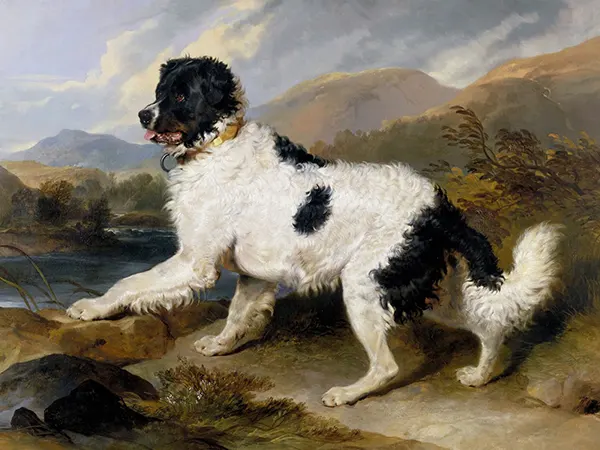
Seaman, a Newfoundland dog, holds a unique place in American history as the only animal to complete the entire Lewis and Clark Expedition, which was the first journey from the Mississippi River to the Pacific coast and back. This remarkable dog was a crucial part of the expedition team, showcasing bravery, strength, and loyalty throughout the arduous three-year journey.
Captain Meriwether Lewis acquired Seaman in 1803 while in Pittsburgh, Pennsylvania, specifically for the expedition. Lewis paid $20 for Seaman, which was a significant amount at the time, equivalent to about $400 in 2022 and half a month’s salary for an Army captain. Lewis chose a Newfoundland due to the breed's renowned strength, size, and docility. Newfoundlands, typically weighing around 150 pounds (68 kg), were also known for their excellent swimming abilities and their aptitude for assisting in water rescues, making Seaman an ideal companion for the journey.
Seaman proved his worth early on, adapting to life on the boats that were a critical part of the expedition. His swimming skills were invaluable as the team navigated numerous rivers and streams. Seaman's docile nature made him easy to handle, yet he was robust enough to endure the harsh conditions the expedition faced. His presence provided comfort and protection to the members of the expedition, as Newfoundlands were known for their loyalty and protective instincts.
Though there are no detailed descriptions of Seaman’s color or specific appearance in the historical records, he is often depicted as black or dark brown in modern representations, similar to contemporary Newfoundlands. However, historical paintings from the early nineteenth century suggest that all-black Newfoundlands were rare at the time. Most depictions from that era show Newfoundlands with white coats marked with black or dark areas and freckles.Seaman’s journey with Lewis and Clark was not without its challenges. He suffered injuries and faced the same harsh conditions as the human members of the expedition. Despite these hardships, Seaman remained a steadfast and reliable companion, earning the admiration and respect of all who traveled with him. By the end of the expedition in 1806, Seaman had traversed thousands of miles, facing treacherous terrain, unpredictable weather, and numerous other challenges.
#8 Buddy: The First American Seeing Eye Dog
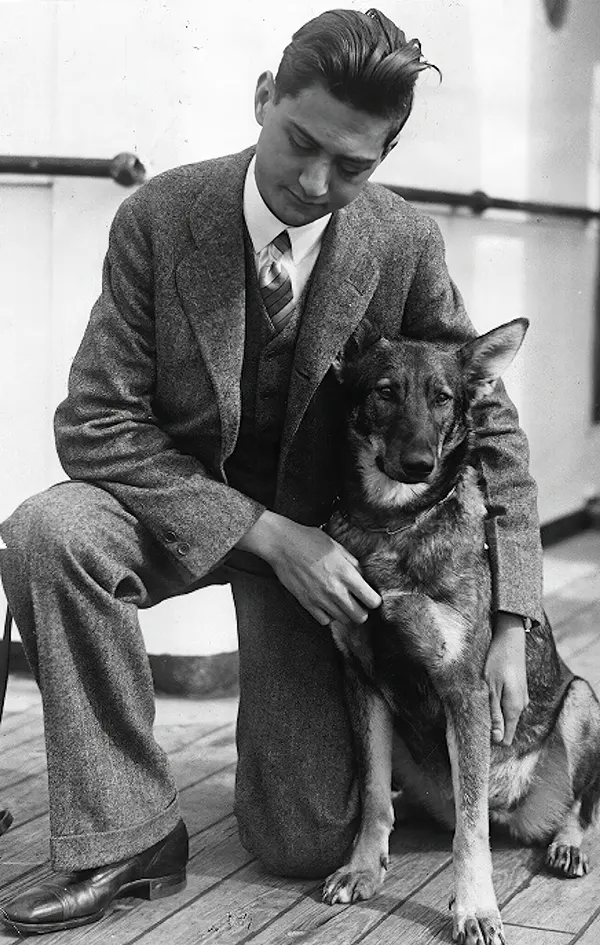
In the late 1920s, Morris Frank, a young blind man, played a crucial role in introducing guide dogs to America, with his loyal companion Buddy becoming the nation's first seeing-eye dog. Frank, a 20-year-old student at Vanderbilt University, was frustrated with his lack of independence and the need to rely on others for mobility. His life changed when he read an article by Dorothy Eustis about guide dogs being trained in Switzerland for blind veterans of World War I.Inspired by the possibilities, Frank reached out to Eustis, expressing his desire to train with one of these remarkable dogs. Eustis, moved by Frank’s determination, invited him to her training school in Switzerland. There, Frank was paired with a specially bred German Shepherd named Buddy. The training was rigorous and demanding, designed to ensure that Buddy could safely guide Frank through various obstacles and situations.
After successfully completing the training, Frank and Buddy returned to America in 1928. Their arrival was met with significant media attention, and they quickly became a sensation. To demonstrate Buddy’s abilities, Frank arranged a public demonstration in New York City. Before a crowd of journalists and onlookers, Buddy expertly guided Frank through the bustling city streets, navigating traffic and obstacles with ease. The demonstration was a resounding success, capturing the nation’s attention and showcasing the incredible potential of guide dogs.
When Frank returned to Nashville with Buddy, people were astonished to see the pair moving confidently and safely through busy sidewalks. Buddy's presence transformed Frank's life, providing him with a newfound sense of independence and freedom. The sight of a blind man and his guide dog navigating the city independently was both inspiring and groundbreaking.
Frank later wrote about the profound impact Buddy had on his life. “Now strangers spoke freely to me,” he recounted. “In the old days, I often envied two sighted persons, who obviously did not know each other, their ease in striking up a conversation. With Buddy there, however, it was the easiest and most natural thing in the world for them to say, ‘What a lovely dog you have!’”
#9 Zanjeer: The Indian Bomb-Sniffing Dog
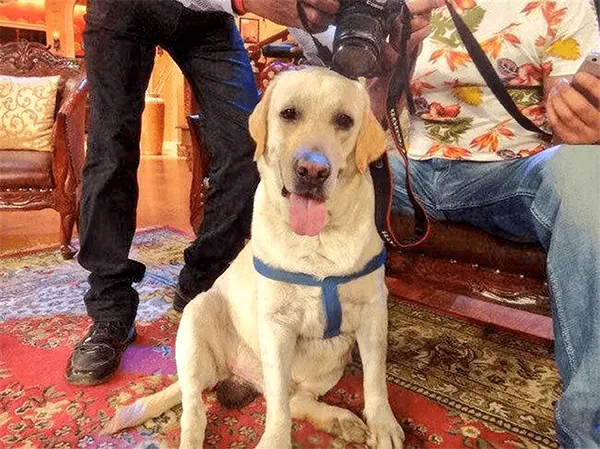
Zanjeer, a Labrador Retriever, distinguished himself as an exceptional detection dog with the Bombay Police, now known as the Mumbai Police, in Maharashtra, India. His name, inspired by the 1973 Hindi film "Zanjeer," was fitting for a dog of his caliber, though he was also affectionately known as “Ginger” due to his coat color. Born on January 7, 1992, Zanjeer quickly demonstrated his remarkable abilities and became an invaluable asset to the police force.
Zanjeer’s most notable contributions came during the 1993 Bombay bombings. These bombings were a series of 12 explosions that rocked the city on March 12, 1993, resulting in 257 deaths and over 1,400 injuries. In this critical period, Zanjeer’s keen senses and training were put to the ultimate test. He played a pivotal role in detecting explosives and averting further tragedies. His work during these bombings included locating numerous explosive devices, which helped prevent additional loss of life and property.
Throughout his career, Zanjeer's contributions were not limited to a single event. He consistently showcased his exceptional skills as a detection dog, finding 11 military bombs, 57 country-made bombs, 175 petrol bombs, and 600 detonators. His ability to detect these dangerous items was crucial in maintaining public safety and supporting law enforcement efforts to combat terrorism and other criminal activities.


